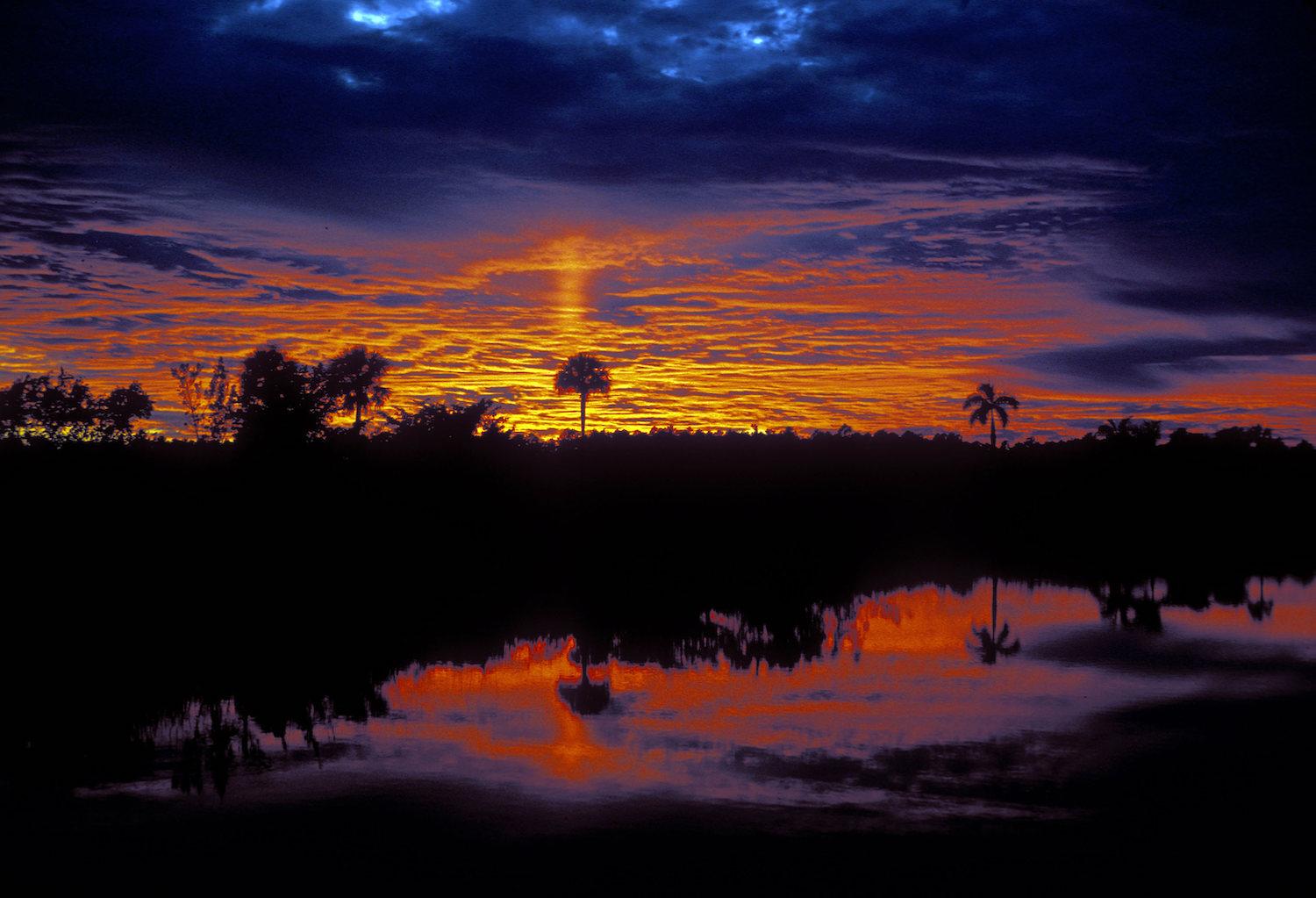
Tracking The Restoration Of The River Of Grass
A Conversation With Eric Eikenberg, President Of The Everglades Foundation
"The Everglades," and the "river of grass." Those words convey powerful imagery of a sweeping, subtropical landscape, one with rare and beautiful plants, flights of colorful birds that can cloud the sky, and curious and fearsome wildlife, from crocodiles and alligators to panthers and, more recently, massive constricting snakes.
Within the 1.5 million acres of Everglades National Park is the country’s largest officially designated wilderness area east of the Rocky Mountains, the 1.3-million-acre Marjory Stoneman Douglas Wilderness.
But this landscape has been under siege almost since the first developers and large-scale farm operations reached south Florida, and brought with them plans to divert or dam the water that flows south from Lake Okeechobee to Florida Bay. All those efforts down through the decades altered the Everglades by changing its natural processes.
Today, it’s been more than two decades since Congress passed the the Comprehensive Everglades Restoration Plan, which has been viewed as a groundbreaking law aimed at restoring America’s Everglades after decades of destruction.
That project was seen as a way to restore, preserve, and protect the South Florida ecosystem while providing for other water-related needs of the region, including water supply and flood control. In 2009, then-Interior Secretary Ken Salazar called the restoration project a national priority.
It’s one with a hefty price tag, one that committed the federal government to providing nearly $11 billion towards the restoration goals, with the state of Florida providing nearly $12 billion more.
Where do things stand? Eric Eikenberg, president of The Everglades Foundation, discusses the project's status with National Parks Traveler Editor Kurt Repanshek.
National Parks Traveler:
To help those who might not have seen Everglades National Park in person, could you describe this incredible place, its ecosystem, and the wildlife that make it home?
Eric Eikenberg:
Each time that I go out there, the landscape, the environment of the Everglades, it's ever-changing. It is a majestic wilderness. It's a majestic, slow moving river, south of Lake Okeechobee, south of agricultural operations. But the central Everglades, the river of grass that Marjory Stoneman Douglas eloquently talked about, it is a free-flowing moving system that water flows through. We can talk more about how that restoration is making sure water gets to the right places. But the bird life, the wading birds, the roseate spoonbills. I saw a bunch of them out there earlier this week. It is fascinating. And what's remarkable about it is you can go in certain portions of the Everglades -- and we'd like to talk about the greater Everglades -- and you can even go into the Kissimmee River Basin north of Lake Okeechobee, the uplands, the rocklands, the pinelands, the diverse habitats that are throughout South Florida. It is America's Everglades, and it's a treasure that must be protected.
National Parks Travler:
Now, last fall, we saw a contract awarded to complete the second and final phase of the Tamiami Trail Next Steps Project. That phase is focused on raising and reconstructing the remaining 6.7 miles of the eastern Tamiami Trail, with features to further improve water conveyance, roadway safety, and stormwater treatment. Phase One of the Next Steps Project improved water flow through the Tamiami Trail with the construction of a one-mile bridge back in 2013, and 2.3 miles of bridging completed in 2019. Most recently, we saw a celebration of the removal of nearly six miles of roadbed from the old Tamiami Trail to allow more water to flow south into Everglades National Park for the first time in a century. How big of a goal was accomplishing that roadbed removal?
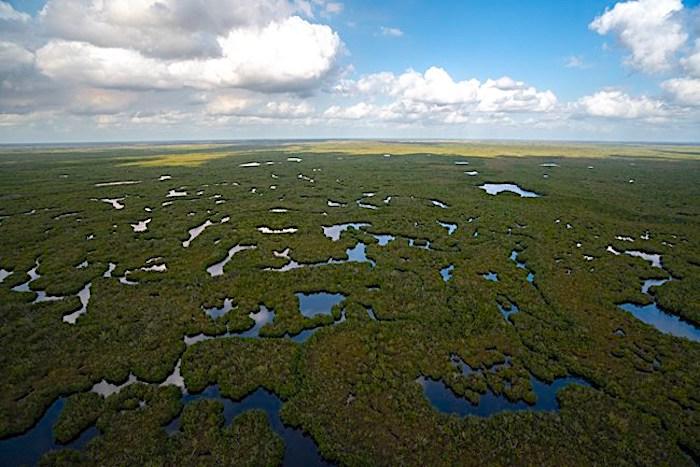
The health of the Marjory Stoneman Douglas Wilderness is dependent on a restored and healthy 'river of grass'/NPS file
Eric Eikenberg:
It was tremendous. This roadbed, this road was first thought of in 1918, and it began to be put in place, constructed in the mid-1920s. And that road, Tamiami -- Tampa to Miami -- it was the connection for commercial travel in the state, getting goods and services across Florida. If folks are familiar, certainly with the Florida peninsula, that U.S. 41 (aka the Tamiami Trail) is there in the southern part of the peninsula, and by removing that strip of asphalt, that asphalt, that roadbed that cut off the natural flow of water from the central Everglades into Everglades National Park, to have now three-and-a-half miles of bridges, there's going to be the construction of putting in massive culverts where the road still needs to be raised. We are seeing significant freshwater flowing into Everglades National Park. That's the whole point. It's pulling the plug in the tub, we like to say, and you have to get water flowing down to Florida Bay and the Florida Keys. Those bridges, they're not bridges to nowhere, these are bridges that are allowing water to move. It was a critical development. And we were delighted that that old roadbed has been removed.
National Parks Traveler:
And now again, for those listeners who haven't been to Everglades National Park or Big Cypress National Preserve next door, or even who might have seen, you know, a National Geographic program on the Everglades, it might be hard to understand what the big deal is because there are times, I mean the river of grass, the river, the water flow from Okeechobee south, is so slow and so it might be hard to comprehend how important it is to the ecosystem and the wildlife.
Eric Eikenberg:
Yes, and I'll point out, too, that the headwaters of the Everglades starts at Shingle Creek, which is just south of the Orlando International Airport. And Shingle Creek begins that flow of water through the Kissimmee chain of lakes. And I want to point out that last week, the Army Corps of Engineers finished the restoration of the Kissimmee River. Back in the 1960s, they dug a channel, a canal, that drained that entire floodplain, and it was a direct chute of water that would fall in north of Lake Okeechobee. That water would go directly into the lake itself. The same agency, the Army Corps of Engineers that dug that channel, filled it in. The original river, the meandering Kissimmee, the oxbows, are back in tremendous fashion. The wading bird population returns. That's a testament that as we continue with this effort to restore the Everglades, the Kissimmee River is a great example that this effort pays off. So by getting water into Lake Okeechobee, naturally it would flow over the southern rim of the lake, into the river of grass, and then again down to the Florida Keys. But this is the water supply, Kurt. This is the water supply for now 9 million South Floridians, and with a growing population, now the third-largest state in the Union, Florida, folks, they live on the coast. They live on the East Coast, the West Coast. You have this great expanse there in the middle of the state, the park, the Big Cypress. But we need to ensure that water flows south, it recharges the aquifer. And again, that's the drinking water supply now for almost a third of our population.
National Parks Traveler:
Now I'm guessing the foundation does a lot of research, funds a lot of science in the Everglades. Are the crews out there now watching to see how this improved water flow is impacting the landscape?
Eric Eikenberg:
Yes. And as pieces to this puzzle come online, and we have more coming soon. You pointed out that Congress passed the Comprehensive Everglades Plan back in 2000. We're now finally seeing projects coming towards that finish line. And as they come online, and those benefits are evident, you're able to see not just water flowing and re-engineering the way water flows, but you're also seeing the benefits to the habitat, the benefits to the species, the increased opportunities for people to recreate within the ecosystem itself. And that, from our perspective, shows that restoration is working. It has a benefit that must be continued. And as far as our scientists, we have eight distinguished PhDs who are experts in the field of Everglades science. They're working with academics across Florida, across the country, to make sure that the decisions that are being made are having a benefit to the ecosystem. The good news, it's happening, more to come.
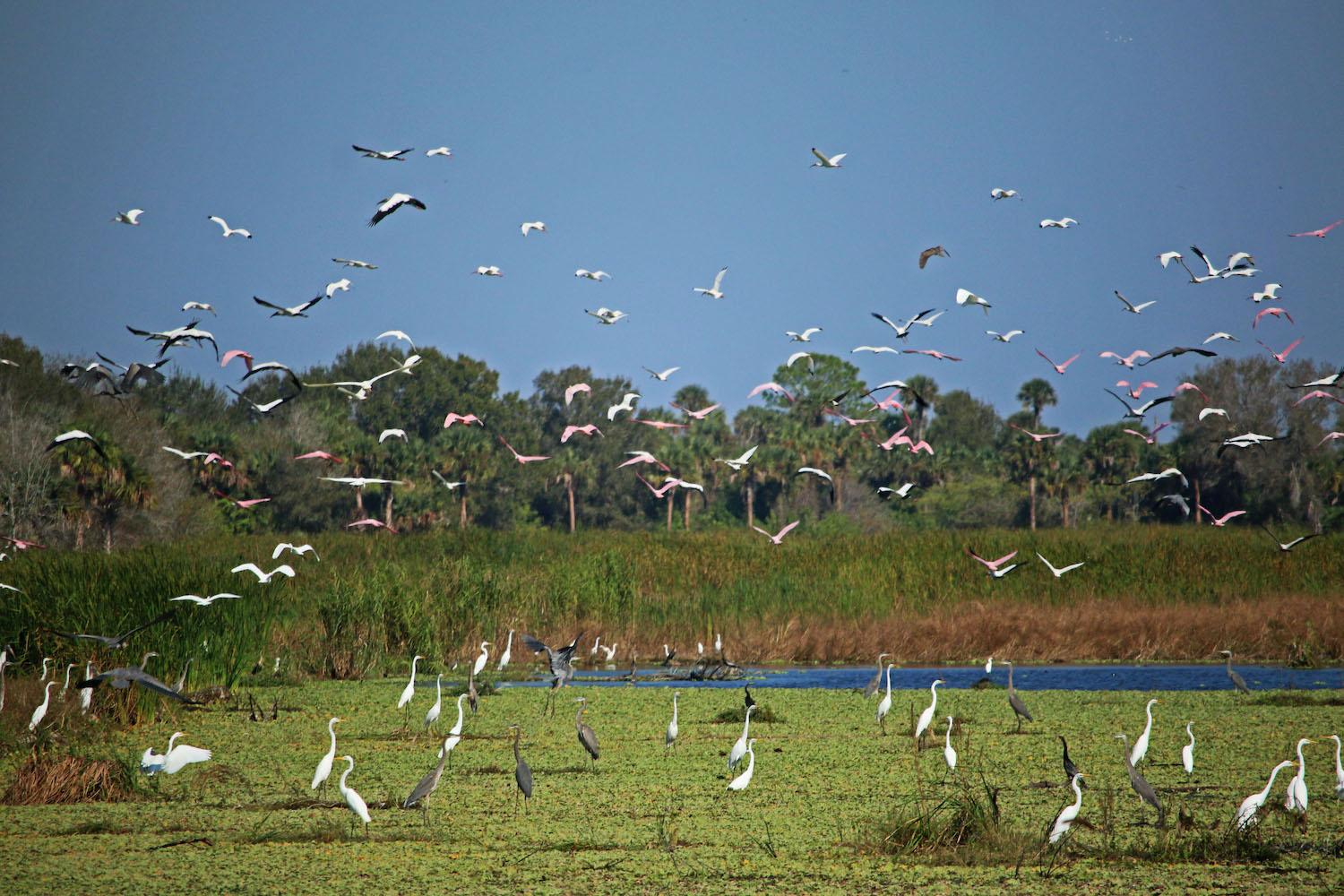
The 2021 nesting season for wading birds in Everglades National Park was one of the better ones in recent years, though not quite as good as the 2018 season (above)/Erika Zambello
National Parks Traveler:
Cause and effect, and maybe this is a question that it's too soon to say, but I understand that this past spring, that there was an incredible nesting season among the wading birds that utilize Everglades. Any idea if that was related to the improvements in the water flow, or was it just because it was a wetter winter?
Eric Eikenberg:
Water is now timed better throughout the 12 months here in Florida, and as you know, we have two different seasons. Normally you talk about four seasons, in Florida it's the rainy season and the dry season. But as water is flowing during more of those dry months, you can time the delivery better and the wading bird populations, the nestings that you've referenced, snail kites, our endangered snail kites that are vibrant here in the Everglades, that population is rebounding. So again, as decisions are made, and as projects are finishing, it's important that water managers deliver the necessary water at the right time of the year. And we're flourishing in regards to, as you point out, birdlife. So, very much an indicator that restoration is improving.
National Parks Traveler:
You know, it's interesting, you're in Florida and you're talking about all this water that you have. And I'm out here in the Rocky Mountains where we're in the clutch of a 20-year-long drought. But as you mentioned, Florida is the third-largest state in terms of population. Is there enough water to balance for the ecosystem as well as for the human needs?
Eric Eikenberg:
There is. We receive, on average, about 66 inches of rainfall per year. And unfortunately, as you and I visit here this day, we waste billions of gallons of that fresh water. I was just out west myself, I have read the reports that have been forthcoming on the historic drought that you're in, and then to have a state like ours that's, because the way we manage water today, we're wasting too much. So Everglades restoration re-engineers the way water flows out of Lake Okeechobee. Lake Okeechobee is our Lake Mead. It's critically important to the state, right there in the middle of the peninsula. And unfortunately, when the lake rises, the only option today is the Army Corps sends the water east and west, and it's polluted. It's a whole 'nother topic of why, but the water is polluted. High in nutrients, phosphorus, nitrogen. And those nutrients being blasted east and west, it causes ecological harm when there's blue-green algae. It's an environmental harm, for sure, it's a threat to human health. But when you have the Comprehensive Plan fully in place, you're able to store clean and send that water south under the bridges of Tamiami Trail that you led with, and then ultimately down to the Florida Keys. So the benefit here is we see crises, we see the wasting of water, but the restoration of the Everglades ensures that we're re-engineering the flow of water, and that direction is to the south.
National Parks Traveler:
Now, restoration work has been underway for most of this century, and granted, we're only in 2021, but still, two decades is a long time in some aspects of life. Where do things stand in terms of achieving success with the restoration project?
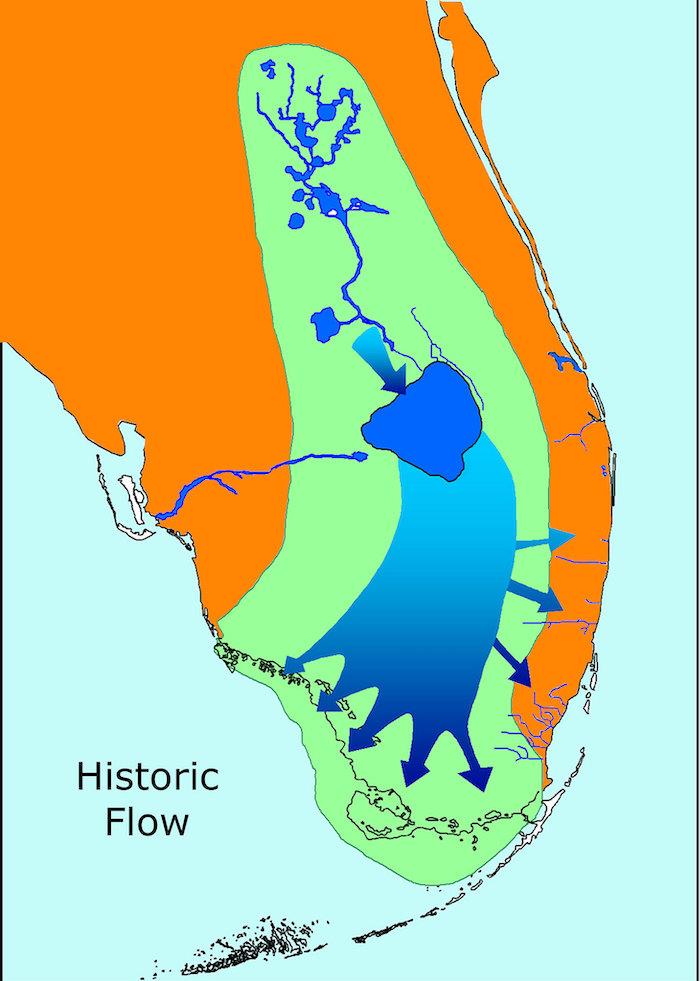
The restoration plan is intended to return water flows through the river of grass as close to historic flow patterns as possible/NPS file
Eric Eikenberg:
We are most optimistic that this is the decade for the Everglades. When President Clinton signed the Comprehensive Plan in December of 2000, it spelled out a 30-year effort, a 30-year journey to restore the Everglades. So here we now are, entering our third decade, and the finish line from the original signing of that bill was the year 2030. So as the state of Florida, the governor of Florida has committed a substantial amount of funding to the Everglades, he pledged $2.5 billion during the four years that we're in. We're now seeing increased money coming out of the U.S. Congress. The current administration, the Biden administration, is recommending $350 million for Everglades restoration. But Kurt, the most pressing opportunity is as Congress debates infrastructure, as Congress determines some climate policies, when you hydrate wetlands, and this is a large wetlands here in the Everglades, when you put water into a wetland, it sequesters carbon. There's benefits. Wetlands provide a tremendous benefit to ensuring that we can combat and work towards combating climate change. It acts as a buffer to rising sea levels as the aquifer pushes water to the east, the Biscayne aquifer. So we have a number of opportunities here to check the box on climate. And we want to make sure that Congress is aware that the Army Corps of Engineers, between now and the year 2030, needs $5 billion to finish all of the projects that Congress has already authorized. So we're positioning, during these talks in Washington, to put this type of dollar amount towards the Everglades. And then let's finish these projects. Let's finish the restoration. Let's do it on time.
National Parks Traveler:
Is it on time? There's nine, eight-and-a-half years left.
Eric Eikenberg:
Well, from the number of projects that are going to make the largest difference to the challenges that we face here, yes. Just last year they began working on a massive reservoir south of Lake Okeechobee that's going to deliver some 360,000 acre feet of water, the 120 to 130 billion gallons that are going to be stored, cleaned, and sent south. So that's going to be a big time game changer in all of this. And that's a $1.7 billion project in itself. And that's just one piece to this Comprehensive Plan, and these various projects. So this is nature-based infrastructure. These are shovel worthy projects, jobs that are longstanding here. And we're just trying to take advantage of the political landscape and the dollars that are looking to go towards climate. Everglades restoration is here to be finished.
National Parks Traveler:
And it's always a tricky landscape, although it does seem like there is bipartisan support for restoration of the Everglades.
Eric Eikenberg:
And to your point, this has been a bipartisan effort over the decades. It is a unifying one, in a time when we need issues to bring us together. This is because, again, I go back to the water supply. Prior to COVID, we were seeing 140 million tourists, 125-240 million tourists a year coming to Florida; they tap into our water supply, let alone our residents. It's all about water. It's about preserving the water supply for South Florida, let alone the benefits to the ecosystem, the habitat, the species. But that's why we're optimistic. We see the political will necessary to finish this, and the Everglades Foundation is going to remain dogged to ensure that we get it done.
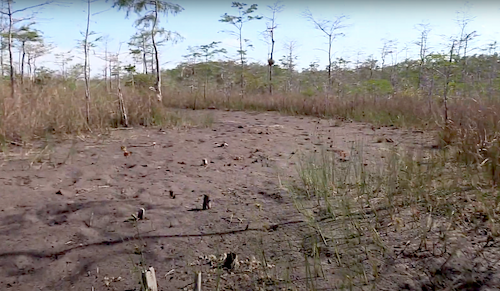
How much of a threat does oil exploration in Big Cypress National Preserve pose to restoration of the Everglades?/Kurt Repanshek file
National Parks Traveler:
You mentioned the great work that the restoration projects so far have done in terms of increasing the flow of water through the river of grass down to Florida Bay. One of the topics that the Traveler has covered for some years now is the oil exploration going on in Big Cypress National Preserve just adjacent and north of Everglades National Park. And there are some concerns that if that went forward with some of the exploration that they're talking about, without proper reclamation of the damage that is done, that could really impact roughly 40 percent of the water that flows down into the Everglades. Is that true? Is that a big concern?
Eric Eikenberg:
Yes, it is a concern. It's a concern that has grown here in the short term. You have a company that owns mineral rights within the Big Cypress, they've been excavating for oil for about 60 or so years. You have a company that has a lease to do it, on about 11,000 acres if I recall. But there have been some, there's been some talk. Certainly the issue has been brought up in the Florida Legislature to determine what the future looks there. I think you might see some interesting news coming, as this topic continues to be elevated. But we want to make sure that the Big Cypress is preserved. And, you know, we've invested a tremendous amount of money in what's called the Picayune Strand. This is an eastern Collier County, east of Naples. It was an old development project that would've built homes on the western side of the Big Cypress. That was thwarted. Then Army Corps of Engineers, state of Florida, came in to work towards restoration. We're seeing now a tremendous amount of water flowing into Picayune, getting down to the Ten Thousand Islands. So, you have mineral rights that are there. You have an operation that's occurring. We want to limit it to that at the moment, but we'll see what comes here in the future. But it's a topic that, again, is gaining attention.
National Parks Traveler:
There's certainly a lot going on behind the scenes. I guess the Park Service is evaluating the request for a drilling permit, and I think the state of Florida is, as well. So we'll see what comes to that, possibly later this summer, if not this fall. Now, there were concerns voiced by the National Academies of Sciences back in 2018, that there needed to be a reassessment of the Everglades restoration projects, goals and approaches to ensure that it would succeed in light of climate change, sea level rise, hotter temperatures, and possible changes in rainfall. Has that reassessment been done, do you know?
Eric Eikenberg:
That reassessment, specifically on what the Academy was offering, I can't speak that they've started their own work on that. But I know our team has been very much aware of their recommendations, or their encouragement. And the South Florida Water Management District, the Army Corps of Engineers, are working together. I will say that when I hear the question, or the point that the Academy raised, the projects that have been in place since 2006, roughly, they were all, Kurt, on the periphery, they were on the coast of Florida. And yes, these are projects that are part of this comprehensive plan. These are projects that need to be constructed and come online. But again, they're not getting to the heart of the matter. And from our perspective, the heart of the matter on all of this is Lake Okeechobee, and getting the lake water down to the Florida Keys. So when you have the Army Corps working with the state to pass and get going on what's called the Central Everglades Plan, this is a plan that is going to decompartmentalize the central Everglades, the river of grass. Instead of having compartments where there's more water in one compartment or not enough in another, you're removing levees, you're filling in canals, you're getting more sheet flow, having natural sheet flow working its way south. Then with this reservoir, Congress in 2018, and the Water Resources Development Act, authorized the construction of an above-ground reservoir south of Lake Okeechobee, directly in the middle of about a half-a-million acres of sugarcane production. There's going to be expansive stormwater treatment areas. I like to call them the kidneys of the Everglades. That's going to be able to treat the water, and then as you move that water south, again, you have the ability to have the carbon uptake there. This is a carbon bank, I would submit to you, here in the Everglades. And then with resiliency issues and rising sea levels and some of the climate concerns that have been raised by the Academy and others, these restoration goals, when they become a reality are going to play a key part in helping to solve the issues and the concerns that we face.
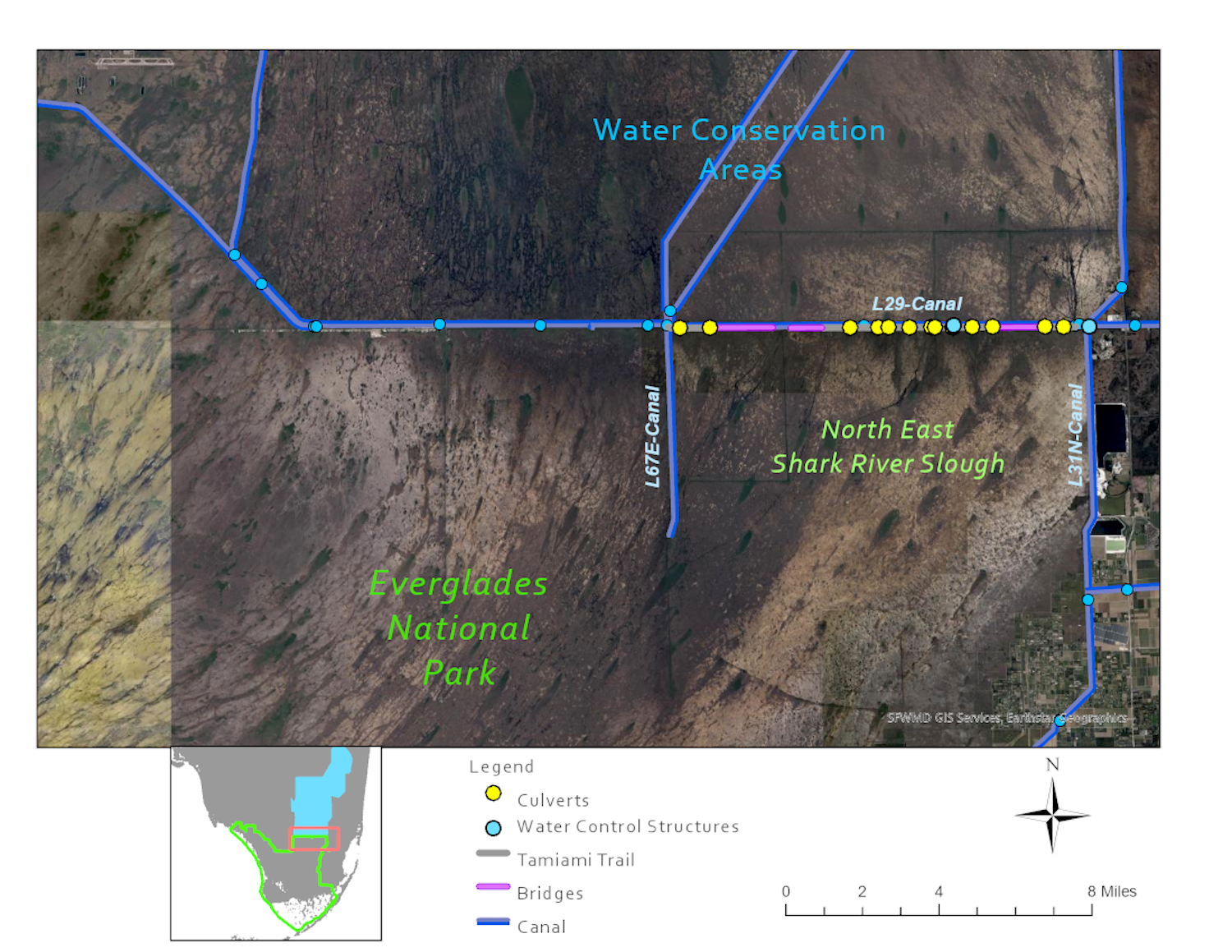
This part of Tamiami Trail blocked water flow into Everglades National Park. Water control structures (light blue dots) were installed in the 1960s to deliver water to the west, but the eastern part still acted as a dam, until two stretches of bridges (purple) and culverts (yellow dots) were added/NPS figure by Amy Renshaw
National Parks Traveler:
Now, we hear in the news that the ice caps on the poles are melting quickly, that hurricanes are becoming more potent, that most recently the Gulf Stream that runs past Florida might be breaking up or changing. Do these events risk impacting the restoration goals of seeing more water flow through the Everglades to Florida Bay, in part through sea level rise? I mean, I believe you'd mentioned earlier that the Biscayne aquifer is actually pushing out towards the sea. I'm not a scientist. I'm kind of curious how all this works.
Eric Eikenberg:
It's an area where we have seen, on sea level rise and salt water intrusion, there have been municipalities, cities in Broward County just up the road from where I sit today, that hit the water supply for Hallandale Beach, for example, and the residents of Hallandale, they had to move their water tower, their water supply west of I-95, because again once that salt water infiltrated the freshwater resource there, it was over. So we're seeing a lot more concern about saltwater intrusion, sea level rise, but when you dry out the Everglades half-a-year, and you have fires and you have concerns there. It's a stress on the aquifer itself. So again, this all comes down to re-engineering the way water flows on the Florida peninsula. And by getting that water staying south in the Everglades, that porous limestone, that freshwater permeates down into the limestone, it hits the aquifer, and then that gravity pull is to the east and the Biscayne aquifer there. I hear stories decades ago, maybe even a century ago, the aquifer would be bubbling up here in Biscayne Bay. In my office, as I look out, my window is looking out at Biscayne National Park, and that was the source. This is the source of the freshwater for South Florida all the way up to southern Palm Beach County. So again, as we work to store more water on the peninsula, it's helping with that. You mentioned hurricanes. We've had hurricanes come through the spine of the peninsula and work their way up. And the Everglades, the Kissimmee River area that I mentioned earlier, they help to absorb a lot of that rainfall. And these flood plains, these wetlands, the mangroves that are along the coast of Florida, help the ecosystem take on all that rain or take on that wind. So we do see when we can ensure the preservation of this ecosystem, it helps us when we have hurricanes, as we're fighting climate change. We just can't let up on this project now that's in year 21. We want to finish it in the next few years for sure.
National Parks Traveler:
Is that water flow down through the Everglades, down into Florida Bay strong enough to counteract sea level rise? I mean, I've heard that some of the mangroves are dying because there's so much salt water.
Eric Eikenberg:
We have had severe negative impact on mangroves along the coast. One of the projects in this Comprehensive Plan is called the Biscayne Bay Coastal Wetlands Effort, and you're taking water fresh that's in our canal system, and instead of shunting it through canals and out to the Atlantic Ocean, is to spread it along the mangroves, along the coasts. And again, the Biscayne Bay coastal wetlands is having a tremendous benefit to rejuvenating our mangroves along the coast. And they act as a barrier, as a resource when we certainly have tropical events and hurricanes. As you point out, as we have hurricanes and you have waterflow, it may not be what people think is a river going through the Everglades. But as water just stays there, and it does move, ever so slightly, but just staying there and permeating down into the limestone, it then helps with that aquifer that does push east and it's a buffer. It's not the answer or the solution to the rising sea level, because we got a lot of coastal resiliency that we need to deal with. But it does act as a buffer. It's important that we have that head pushing towards the east. You can't fight climate change on the coast of Florida without finishing Everglades restoration. And that's certainly the message we've been delivering.

Invasive species, such as the Burmese python, pose a threat to complete restoration of the Everglades/NPS file
National Parks Traveler:
Right, right. Now of course it's 'The Everglades Foundation,' it's not the 'Everglades Hydrological Restoration Plan Organization.' If and when hydrological restoration is accomplished, and, you know, in eight-and-a-half years hopefully, what about the invasion of the park and the rest of the Everglades by invasive species, such as the Burmese python and other reptilian species, the non-native vegetation such as Brazilian pepper and melaleuca, lionfish in the park's marine waters, and even colorful birds normally found in pet store trade, the monk parakeets.
Eric Eikenberg:
You've brought an issue forward that is of utmost importance, just as important as the hydrological balance of water through the Everglades itself. So, having agencies like the Florida Fish and Wildlife Commission, the U.S. Fish and Wildlife Service, Everglades National Park and its researchers, really raising awareness on invasives. You mentioned pythons, they appear to get most of the attention. Folks don't really understand how many are out there. It's a tremendous amount. We're seeing the impact on fur-bearing animals within the Everglades. I used to see a lot of rabbits when you're driving along Tamiami Trail from Miami to Naples. I haven't seen a small Everglades rabbit in years. So as we see the threat, it's ensuring that residents that have these exotic species, snakes, other animals, when they're tired of them, they not go out there and drop them off. I mean, there was concern that that was an issue. Years ago, Hurricane Andrew, there were stories that people lost their homes and they went out there and dropped the snakes off just because they couldn't deal with them any longer. All that to say, this is a major problem. You talked about melaleuca. I remember when I worked for Congressman Clay Shaw, we were out with Bruce Babbitt, releasing beetles to go out and fight melaleuca. All the science, the research, all of that is still very, very much necessary. But this needs to be done on parallel tracks. You have to fight the invasives. You got to go after the invasives with as much gusto as you're going after the dollars in Washington or in Tallahassee to finish these projects. So it's on parallel tracks, you can't have a restored, hydrologically balanced Everglades without aggressively fighting the invasives. We have a lot of work to do on that front. But thankfully, the public is a little more aware of the concerns that we're seeing on the topic that you've raised.
National Parks Traveler:
Are you seeing as much support for it from the state and federal governments in terms of, you know, are they supporting the efforts to attack the invasives as much as they're working on the restoration of the river of grass?
Eric Eikenberg:
Yes, I think it's building. It's going to take a little more time. But there's very much attention. I do want to point out again, the Florida Fish and Wildlife Commission, they host on the pythons, they host an annual hunt, where folks are encouraged to go out, they get trained, they go out, they bag these pythons. But it's not even putting a dent in the overall problem. So you know, you have universities in Florida that are tagging these snakes with GPS devices to track and follow their movements. And so you know, bringing all of these resources together. We hope for cold snaps, because these snakes, a lot of them, a lot of them are affected by cold snaps that occur in the Everglades. So again, I don't want to diminish the fact that we have a challenge. We're putting resources behind it, the agencies that are doing it. But we need the public to also come alongside and ensure that they're not adding to the problem. But we've got to tackle the invasive issue across across the Everglades. No doubt about it.
National Parks Traveler:
Everglades National Park is on the UNESCO list of World Heritage Sites. Many national parks in America are, Yellowstone, Grand Canyon. Everglades is the only site I believe in North America that is listed as a World Heritage Site In Danger. Because of all these challenges, whether it's the restoration of the river of grass, or it's the invasive species, or if it's oil exploration on the boundaries of the park. What progress is being made in your opinion to get that designation lifted?
Eric Eikenberg:
The designation that's there, when you hear that being introduced, or you hear that being tagged onto Everglades National Park, it just spurs you to push even harder. I think the time will come when we can see the benefits of all of this work. The beneficiary of this entire effort is Everglades National Park, because it is on the southern end of the peninsula. And as water is going to flow south, they receive it. They're the beneficiaries. In 2015 because we're not flowing the proper amount of water south, you had too much saltwater in Florida Bay. The salinity level became so high that you have 50,000 acres of dead sea grass floating on Florida Bay, and that impacted tourism, it impacted the fishery. And what we said following that event is, we rang the bell to say this is truly 'now or neverglades.' If we don't get this right, not only is the ecosystem in danger, but you have a national park. And again, yes, it's in Florida. But we don't say that the Grand Canyon is Arizona's, we don't say that the Tetons are only in a certain region. These are national treasures, and this is America's Everglades. This is important just as much as challenges are faced in other national parks. I made an analogy to a member of Congress just the other day, if the torch of Lady Liberty fell off, cracked off, we would all as Americans rally around to get that torch back on Lady Liberty. This is the issue here. We have an Everglades that is threatened, that is harmed, that is in desperate need of repair. The restoration plan needs the dollars from Washington, in particular. And that's where we're seeing the progress. So, to get to your question on UNESCO and the World Heritage Site, I think by the year 2030, when the plan is complete, if not before, that that endangered label is removed, and we can all celebrate the fact that we have saved this national treasure, and we pass it on to the next generation for perpetual protection.
National Parks Traveler:
I hope you're right, Eric. Let's stay in touch and monitor that progress as we move forward towards 2030, and hopefully we'll get to the finish line maybe a little bit ahead of time.

Comments
Kurt, great interview, but tired intro. "Tired" because it levels the same pointless allegations against "whites" that accompany just about every article on the American West: Whites are the bad guys. My challenge to you and the staff: Try to write a learned article without resorting to race.
You're right, Richard, bad choice of words. "Developers" and "agriculturalists" would have been a better description. We've corrected that.